I'd never heard of Healwell before and took a look over their offerings. Has anyone used the products? Beyond the…
Monday Morning Update 11/18/13
From Concerned: “Re: Truven Health Analytics. Its Q3 2013 SEC 10-Q says 2012 was an earnings disaster, and so far this year the company has lost $26 million and is increasing debt to pay bills.” I took a quick glance over the form, but I’m not an accountant and most of it glazed me over. Revenue took a big jump year over year and the net loss dropped as expenses were held fairly steady through the acquisition of the Thomson Reuters healthcare business in June 2012. As of September 30, the company appeared to be running a monthly loss of around $3 million and had $8 million in cash. The long document full of numbers is confusing because of the acquisition, but it appears that the company lost $8.4 million in the quarter vs. $20 million a year ago, so the situation may be improving. I found it depressing that Truven has 225 pending lawsuits against it filed by people who claim they were harmed by the drug Reglan and are suing the company because its patient education materials didn’t warn them of that possibility.
UPDATE: Truven provided this clarification: “Truven Health Analytics has performed well in 2012 and through the first three quarters of 2013, with steady increases in revenue and robust margins for adjusted EBITDA. Reported losses are due to accounting changes stemming from our divesture from Thomson Reuters and one-time costs associated with the migration of our data center from Thomson Reuters onto a standalone platform, neither of which affects ongoing operating performance.”
From FormerHHSIntern: “Re: HIE. Secondary consequences of poor Healthcare.gov rollout. Impending implosion over failed $600 million HHS/ONC Health Information Exchange grant program. At least one senior ONC leader will leave in next two weeks.” Unverified.
From Ken Dahl: “Re: paper vs. EMR for physician data entry. There’s a big difference on that score for inpatient vs. outpatient. For inpatient care, EHR is much better – for purposes of rounding, orders, med rec, and keeping track of care plans. Outpatient clinics are a bit more difficult because of the amount of charting required on EHR is overwhelming, and leads to a lot of MDs typing while talking which sets up an uncomfortable dynamic for the ‘therapeutic’ interaction. But there’s always a tradeoff – either you chart with the patient or you chart at the end of the day and you lose an hour or two of time with your family that night. That is a reason MDs are becoming less interested in having a clinic practice.” General practice and some specialist physicians are, for the most part, vastly overtrained for seeing office patients. They are wasting most of their day looking at the same old problems that an extender could handle, playing EMR stenographer, and chatting with patients whose chronic disease requires no new diagnosis or treatment. Doctors (and healthcare in general) could learn from my dentist. Usually there’s just one dentist on duty, but a stable of hygienists and techs keeps several rooms full of patients undergoing everything from cleanings to denture repairs to crown and cavity work. He flits between rooms to oversee everything, speaks to every patient to hear any concerns, and shows up just in time to perform procedures on the fully prepped patients. He does not touch the practice’s fully electronic dental record and imaging system that I’ve ever seen, complete billing documentation, or handle referral or absent-from-work forms. We need to separate out the tasks that truly require a physician’s extensive education and experience and turf everything else off to cheaper and more readily available positions. One might argue, however, that physicians created the current state because they, until recently, were happy to collect big paychecks in return for underusing their skills.
From The PACS Designer: “Re: Apple’s curved screen iPad. As Apple continues to innovate in the PC space, they will be offering an edge to edge curved screen with the iPad 6 in 2014. Other rumored improvements are the replacement of the current screen material called Gorilla Glass with the indestructible sapphire material which is currently in the camera and fingerprint button.” The curved glass (image above from TechCrunch) would be mostly a cosmetic enhancement, but Apple is supposedly working on technology that will allow its mobile devices to detect the amount of pressure of a fingerprint touch and react accordingly. The current iPhone touch accuracy has been tested and found to be dramatically inferior to that of the Samsung Galaxy S3, so it’s time for the House That Two Steves Built to get on the ball.
Hospitals should stop fantasizing about big data and instead use the data they already have (and often ignore) to make improvements, the clear majority of poll respondents say. New poll to your right: do you use any mobile apps to monitor or improve your health? You can interpret what that means to you – apps for exercise, diet, medically related reminders, or health tracking.
Welcome to new HIStalk Platinum sponsor Connance. The Waltham, MA-based company was founded in 2007 to offer cloud-based predictive analytics and rule-driven workflow technologies that improve the financial performance of healthcare providers. Programs include self-pay maximization, commercial revenue optimization, performance benchmarking, charity and outreach, A/R valuation, revenue leakage detection, managed care contract enhancement, preventable readmission management, and consumer engagement. St. Joseph’s Hospital of Atlanta reported a 13:1 ROI, Florida Hospital saw a 20 percent increase in cash collections, and Children’s Hospital and Medical Center saw a 45 percent increase in charity dollars and a 40 percent decrease in bad debt expense (more case studies are here). I interviewed CEO Steve Levin in October 2013 and we covered some interesting topics: the changing nature of self-pay patients, the hit hospitals take on their patient satisfaction scores that are due to lack of financial service excellence, and ACA-triggered changes in charity classification. Some fun facts from its site: 40 percent of self-pay accounts generate 90 percent of the cash; 30 percent of accounts assigned to bad debt should be charity; and 20 percent of denials cost more to pursue than they will generate in cash. Thanks to Connance for supporting HIStalk.
Travis from HIStalk Connect and I will be reporting live from the HIMSS-produced mHealth Summit in the Washington, DC area on December 8-11. They’re offering a $75 registration discount to HIStalk readers (use code HISTalk). We’ll have a tiny HIStalk booth in the exhibit hall, staffed by my newest team member and the non-anonymous face of HIStalk, Lorre. I think she’s bringing some little giveaway items, hoping to distract from the fact that our booth will have all the charm of a rental storage unit because the furnishings were out of our price range (I may begrudgingly get her a chair to sit on, but I’m thinking about bringing one of those $10 folding camp chairs from the local Walmart). Lorre is getting a crash course in all things HIStalk without having met any actual readers or sponsors, so stop by and say hello so she doesn’t think I made it all up. You can email her to say hello if you like.
The AMIA 2013 Annual Symposium started Saturday in Washington, DC. I’ve never been to one (I’m not a member, although I once was, and I had a conflict this week) but I like the topics – it’s like a more academic and less commercial HIMSS conference from what I can tell. I decided to run tweets from the conference in the right column just in case you want to see what’s going on there.
AMIA announces at the leadership dinner of its conference the Stead Award for Thought Leadership, which will be awarded to recipients whose vision influences the use of informatics to improve healthcare. It honors Bill Stead, MD, associate vice chancellor for health affairs and chief strategy and information officer at Vanderbilt University Medical Center. Above are Stead with the members who recommended creation of the award: Nancy Lorenzi, PhD (VUMC); Bill Stead; Ed Hammond, PhD (Duke Center for Health Informatics); and Kevin Johnson, MD, MS (VUMC). The award’s colors will be Duke blue (where Stead was a student under Hammond), Vanderbilt gold, and AMIA crimson. I was amused that AMIA, like others regularly do, confused in the announcement its own journal’s name (JAMIA) with that of JAMA, saying that Bill was the first editor of the Journal of the American Medical Association, which if so means his informatics research has turned up the Fountain of Youth since JAMA’s first issue rolled off the presses in 1883.
ONC announces that it will develop interoperability standards that will allow EHRs to exchange information with state-run prescription drug abuse databases, updating pharmacy records in near real-time and helping prescribers identify potential abusers directly from order entry. An HHS task work group created the plan in 2011, final recommendations were issued in August 2012, and pilots were completed this year.
The Metro Atlanta Chamber names patient payments platform vendor Patientco its 2013 Healthcare IT Startup Company of the Year. I interviewed CEO Bird Blitch a month ago, including a question about Georgia healthcare IT companies.
Knowledge management solutions vendor Streamline Health announces a secondary stock offering to finance the acquisition of two small, unnamed software vendors. Company A offers patient scheduling and access solutions, has 29 clients, and will be acquired for $6.5 million in cash. Company B offers financial and operational analytics to its 35 clients and will be acquired for $13.75 million in cash and stock. I interviewed CEO Bob Watson in August 2013. I observed then that STRM shares had jumped from $1.50 in early 2012 to $7 at that time; they’re at $7.60 now.
Eleven Canada-based startup healthcare IT vendors will demonstrate their products in Philadelphia on Tuesday as part of a collaboration program between the city and a Canada-based health IT accelerator. On hand will be Caristix (HL7 integration), Hospitalis (clinical pathways and interventions), Infonaut (infection control surveillance), Memotext (patient adherence), Pulse InfoFrame (analytics), Sensory Technologies (homecare management), HandyMetrics (hand hygiene auditing), Impetus Healthcare (online communities), Interfaceware (HL7 integration), MetricAid (ED efficiency), and Phemi Health Systems (analytics).
The board of Cover Oregon, the state’s health insurance exchange, places its executive director on notice because of website problems that have resulted in zero enrollments for coverage that begins January 1. The board expressed displeasure with Oracle, which it says missed deadlines and provided marginally skilled employees. The exchange has asked the federal government to loan it seven people to help.
CMS Deputy CIO Henry Chao did his best to rally the troops this summer to get Healthcare.gov ready, but his patience for missed deadline excuses and demands for more money (especially from contractor CGI) was obviously wearing thin by mid-July. According to a July 12 email, “they [CGI] need about $38 million more to get them through Feb. 2014 … the $38 million does not include the approximate $40 million we have in the budget for this contract.”
Steve Larkin (maxIT Healthcare) joins ESD as regional VP.
Marc Winchester (Intuit Health) takes a sales and marketing role with supply chain systems vendor Aperek, previously known as Mediclick.
Robert Marcus, MD (NextGen) joins TrustHCS as a physician consultant.
Richard Tunnell (UMDNJ) is named CIO of University Hospital (NJ).
Fargo-ND-based Intelligent InSites employees wore tee shirts Friday to support United Way. The hats are from the company’s user group meeting held this summer, and since they invited me but I couldn’t attend, they’ve got one with my name on it.
If your HIS-torical memory includes names such as McAuto, SAINT, IBAX, and Amex, then you’ll enjoy Vince’s chapter this week in his continuing analysis of the confusing and sometimes incestuous McKesson HIT family tree.
Contacts
Mr. H, Inga, Dr. Jayne, Dr. Gregg, Lt. Dan, Dr. Travis, Lorre.
More news: HIStalk Practice, HIStalk Connect.



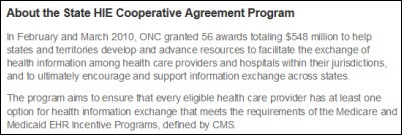

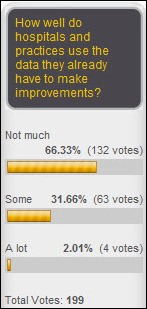
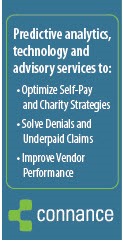

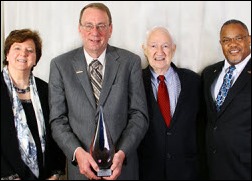
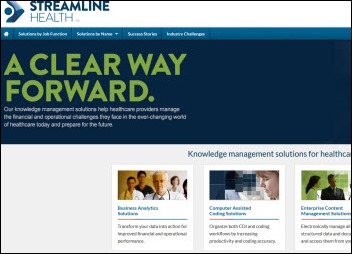

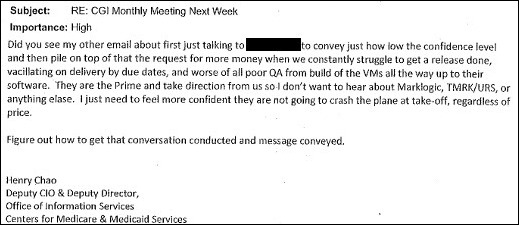
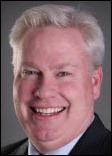
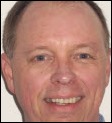
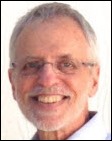
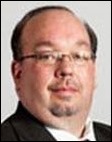


You are so correct about outpatient/physician practice EHR issues!
Several days after receiving the results of a minor blood panel for recurrent and annoying bouts of anemia I received a call from my physician’s office that my results were fine and I was cleared for surgery.
I had been given the results before leaving my appointment and….there is no surgery on my horizon!
I insisted I wasn’t seeking clearance for any surgery. Eventually the nurse curtly stated that she would note my denial in my chart.
I went to the office and expressed concern. Did they swap my labs with someone else’s chart? Was another patient waiting for these results to move forward with surgery?
The chief nurse informed me that their computer system (unkind words eliminated) required physician input to ‘close’ a visit. Dr. J. saw my boring lab results and apparently cleared me for an unknown surgery!
It appears that software used in the physician practice realm does not reflect actual, accepted ‘practice’ methods.
This is frightening and could easily create libelous scenarios for those less informed and forgiving to the new world of electronic physician charting.
RE: Samsung s3 vs. iPhone touchscreen accuracy – what’s ignored here is that this “inaccuracy” on Apple’s part is intentional, and done at an OS level – the raw signals from the digitizers are essentially the same. What Apple does is map raw touch events slightly to take into account your finger obstructing your view. What results is better accuracy in the sense of real-world use, at the cost of not truly mapping the event with machine-like precision. You can see this if you ever try to use your iPhone upside-down – it doesn’t respond the way you think.
We should remember that these devices are meant to be used by humans.
@histalk “One might argue, however, that physicians created the current state because they, until recently, were happy to collect big paychecks in return for underusing their skills.” Makes no sense. If their skills were deployed always, and if they were paid for their skilled procedures and evaluations, the costs would be higher.
As for the statement in blue, data entry is not the issue. Order entry is the issue and according to study, cause new errors. That is but one reason why outcomes are no better, despite $ millions to $ billions.
Just think, those funds could have been invested in a trust (rather than in healthcare.gov, HIEs, and EHRs) and the income used to purchase meds, nursing care, nutrition, and vaccines for the downtrodden and indigent.
First off, to HHSintern, your doom and gloom statement regarding State HIEs is over-stated. Yes, many of these HIEs will struggle for a multitude of reasons but there will be a significant percentage that will find a model of sustainability. A shame HHSintern did not listen to eHI’s most recent webcast re state of HIEs, which is almost solely focused on public HIEs that presented some good trend numbers.
As to Truven, that is pretty simple to explain. As with most acq of this type, the acquirer loads the acquiree with enormous debt to quickly recoup a majority of its investment. Of course they hide all of this in 10Qs with mind numbing number games.
Lastly, how many times are we going to have to hear about EHRs and physician productivity. When will we as an industry finally move on?
“ONC announces that it will develop interoperability standards that will allow EHRs to exchange information with state-run prescription drug abuse databases, updating pharmacy records in near real-time and helping prescribers identify potential abusers directly from order entry”
I love how the word “allow” is used here. This looks like another connection, state by state, that the EHR has to develop. Put it on the list behind the 62 Cancer Registries, Community Health Registries, HIEs, hundreds of lab and PM interfaces, etc. Be smart — mandate this to Sure Scripts, since they have all the connections anyway.
Again, the ONC gives no thought to the how hard it is to pry $2,500 from a physician for each of these connections. If I live in DC, do I have to connect to MD, DC and VA? Or, even better, legislate (since the industry can’t figure it itself) a connectivity platform. Learn from the HIE debacle.
Ken, loved the analogy to a dental practice to ambulatory specialty practices … I work with a very volume academic orthopedic practice and the key to our financial productivity and physician happiness is how effectively we extend our providers in an ambulatory environment, This is especially true of our surgical providers that have academic responsibilities. An EMR can often drive changes that were indicated well before implementation. It should be quite obvious that you want your surgeons maximizing face time with patients, seeing the right types of patients, and having a high new patient surgical conversion rate. Your optimal utilization of PA’s, NP’s, MA’s, Nurses, and other types of allied health providers is critical and will only increase in importance in the future. The high volume and margin practices that struggle either don’t want to come to grips that they need to spend more $ in the wake of an expensive EMR implementation, or that that need to shift their culture to allow new workflows that shift data entry away from highly productive surgeons and specialists. If this occurs, the patient, the physician, and the provider benefit. I have seen practices that make this shift surpass volumes they had prior to their EMR.
“General practice and some specialist physicians are, for the most part, vastly overtrained for seeing office patients. They are wasting most of their day looking at the same old problems that an extender could handle… We need to separate out the tasks that truly require a physician’s extensive education and experience and turf everything else off to cheaper and more readily available positions.”
This is spot on. Physicians complain of being over-worked, but then many of them are up in arms if you suggest offloading some of that work to PAs and NPs. They see it as “losing business” rather than “caring for patients in the most effective way.” Not only are our clinicians stretched thin, but they are wasting time on simple matters and aren’t able to practice up to their license.
Of course, hospitals are at fault here too. A physician should be surrounded by a team (much like the dentist) of nurses and extenders that each takes care of the patients as much as they can, and the MD gets involved when they are truly needed. Let the PA handle that kid with a cold and that routine diabetic check, while the MD focuses on very sick patients or patients with multiple issues. Instead, you see hospitals judging physicians by how many patients are seen without giving physicians the staff to keep up.
And part of this team approach should be teaching the nurses and extenders to queue up as many orders and as much documentation as possible to keep the MD off the computer as much as possible. I’m in favor of moving to EMRs, but the all-to-common approach that requires physicians to document nearly everything themselves is a mistake. It’s two sides of the same coin: physicians should have other clinicians handle the simple cases so the MD’s skills are used on the patients who need the most help. Meanwhile, the staff should keep the MD’s time in the EHR to a minimum so the MD isn’t wasting time on rote documentation. It’s all about being efficient.
Agreed on the workflow optimized dentist example.
One secondary point. It may not be best to have the MD completely hands-off on the clinical documentation. One thing the IT industry has encountered, in every business sector, is the “telephone game” effect. The further removed the generator of information is from the destination of that information, the more errors are produced and the longer it takes to get errors corrected. Having information generators be their own recorders shortens the feedback path to one.
That’s not to say that the MD should be documenting everything, but perhaps some things (CPOE?) should be.
To all who say “this is not a good use of my time”. This used to be the justification for the old typing pools in commerce. Seen one of those lately?
To all who say “I just want to practice medicine”. There is hardly a career to be had anywhere, that does not involve use of a computer at least some of the time. Mechanics? Check. Sales? Check. Logistics? Check.
To all who say “The EMR user interface is inefficient and immature”. I say to you, to the extent that such issues exist, they will be changed until they are efficient and mature. It may take a while. It may take a new product. It may take a new EMR vendor. However it will happen. On the other hand if you don’t apply the pressure to make it happen, maybe it won’t happen for you.